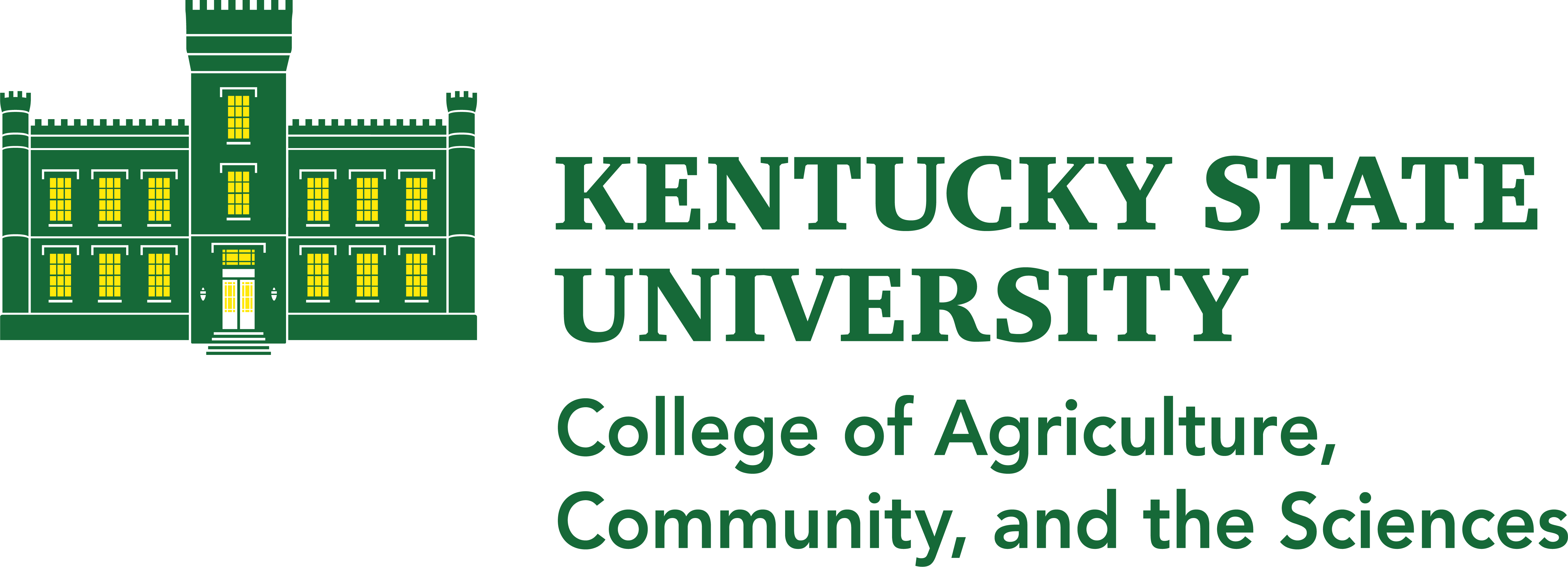Blog 6-4-25
National Weather Service Freeze Warning
On top of the historic flooding seen across Kentucky and the region, mother nature is throwing us another curve ball. The National Weather Service has issued an alert across the region for the possibility for a hard freeze with temps as low as the mid-20s, which could have a significant effect on our fruit crops!
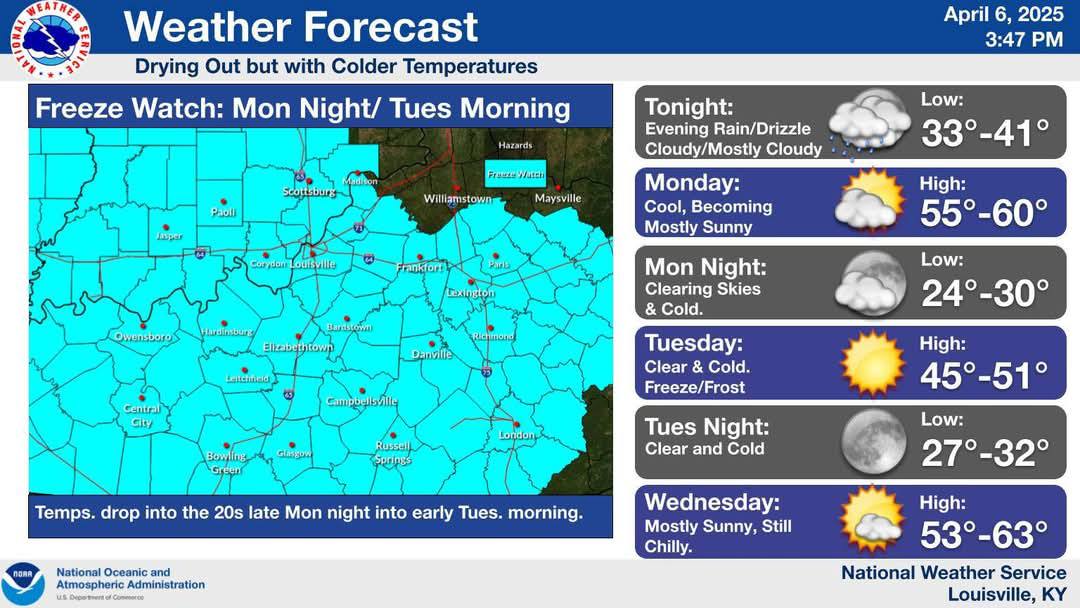
WHAT TO KNOW
To assess the severity of a freeze event several factors must be considered:
Temperature - The most obvious factor to consider is temperature. While minimum temp is the most important factor, the length of time spent at that temperature is also crucial. The temperature leading up to freeze is also important. Plants exposed to colder temps will likely be able to withstand cold better than plants experiencing a rapid and wide temperature swing.
Stage of Development - The floral buds and fruitlets are the most important and sensitive part of fruit crops during a freeze event. The stage of these organs is directly correlated to their sensitivity. Scientists have named several stages of floral development and derived that the temperatures on average need to kill 10% and 90% after 30 minute of exposure. Growers use tables like the ones attached to determine the risk going into a potential freeze. In Kentucky, our apples are around full bloom, pears are just to petal fall and peaches near shuck split. According to these tables, temps in mid 20s could cause complete crop failure!
Site - Site characteristics play a significant role in minimum temperature, which is why site selection is one of the most important decisions for an orchard. For example, a site at the bottom of the hill will be several degrees lower than the top due to the cold air settling in the lowest areas. Also, trees next to a large thermal mass such as a body of water or even a building will be buffered from reaching as low of temps, making understanding the microclimates on your farm crucial.
Type of Freeze - We generally think of freeze in two types of events: advective and radiative. The major difference between the two is the presence of an inversion layer, where the cold is pushed to the ground during the night with a pocket of warm air above it in the atmosphere. A radiation freeze will generally occur on a calm night which allows the inversion to form. Advective freezes are usually from large fronts caused by low pressure systems and winds usually prevent an inversion from forming.

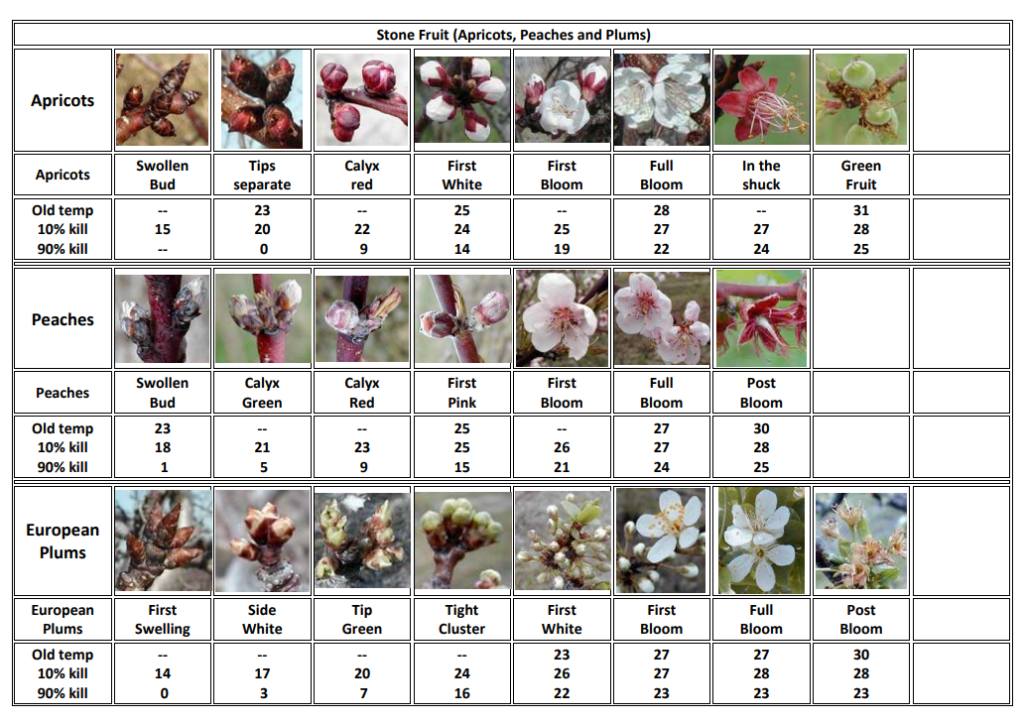
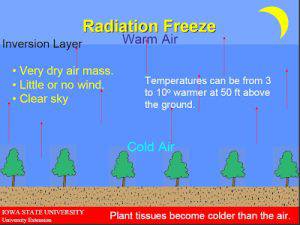
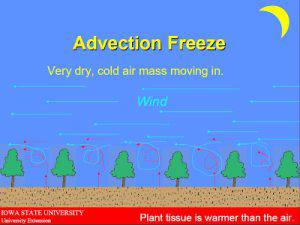
WHAT TO DO
When we think about frost prevention we classify strategies into two types: active and passive. Passive are things we do before a freeze to reduce risk. This includes site selection, species and variety selection, having proper air drainage on a site, etc. Active strategies are things we do during an event when we are at risk to minimize damage.
Before we deploy active frost strategies we need to do two things. First we need to determine our risk. We can use the bud stage tables or sometimes predictive models to determine if the predicted temps are damaging. This is critical because these methods are usually costly in terms of labor and resources so deploying them when not needed is wasteful. Alternatively, not being prepared ahead of time can cause a loss since many of these methods need to be started well before the minimum temp is reached.
Second, we need to look at the other weather factors. For example high winds make many of these strategies ineffective and not worth deploying.
Growers will use active strategies such as wind machines, heaters, sprinklers, and covers. Wind Machines are giant fans which raise temperatures by mixing the inversion layers. Obviously, an inversion layer needs to be present to be effective. Sprinklers cover the buds or fruitlets in a layer of ice, the heat released from water becoming ice will keep them right around freezing. The sprinklers must be run continuously until the ice has melted. Heaters are usually used in conjunction with wind machines and are generally fuel heaters which add heat to the air. Covers such as Remay can be used to cover berries or even dwarf fruit trees. When covering, it is vital to also cover the ground, as trapping in the heat from the thermal mass of the ground is what provides the protection.
OTHER RESOURCES
Over the next couple of days, keep an eye on the NWS Website for updates about freezes in your county.
UPDATE US!
What stage are your trees at? Do you think your predicted temps will cause damage or are your site and species selections enough? Are you going to deploy any prevention strategies? We would love to hear more and see pictures of your set up. Follow us for more updates and information on fruit growing.
4/6/2025

